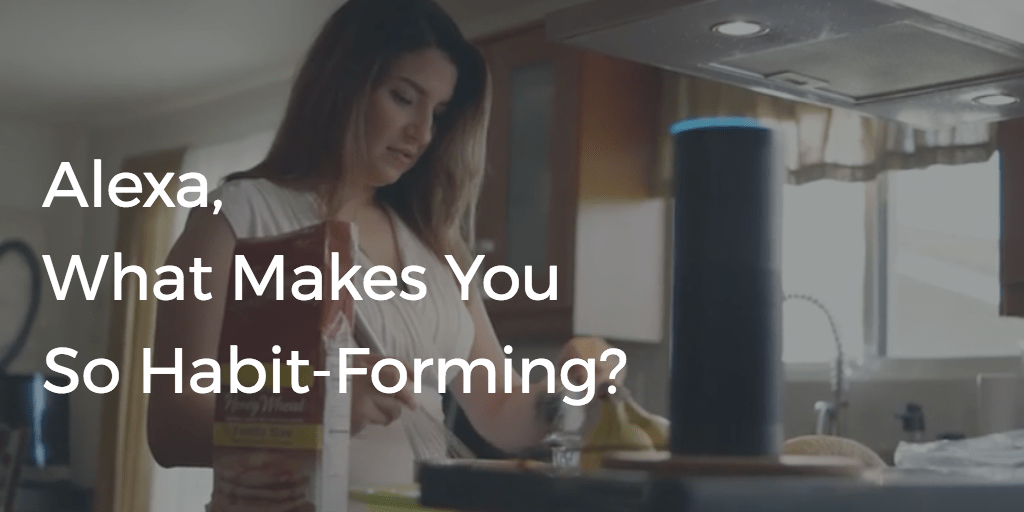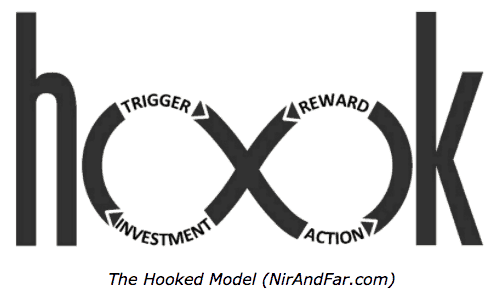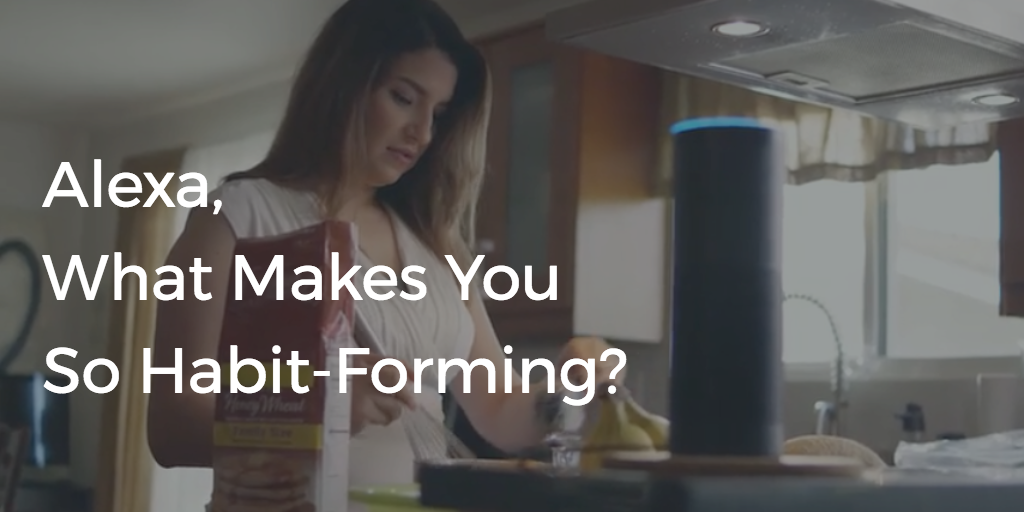Her name is Alexa and she is the voice of the Amazon Echo. Trigger Every Hook starts with a trigger. The fear of forgetting is an internal trigger prompting us to tell Alexa to add an item to our list whenever we run out of something around the house. For example, consider the number of steps required to add an item to our family’s to-do list through an iPhone versus the Echo: To do app on iPhone: Locate phone (this may involve many more steps depending on how forgetful I am that day) Unlock phone Locate and open our to do app Navigate to the appropriate to-do list (I have many to do lists) Tap “Add a to do” Type the name of task Tap “Done” to save the to do Put away phone Amazon Echo: Be anywhere near an Alexa-enabled device (in our home, that’s just about everywhere except the front yard) Speak the words, “Alexa, add ________ to our To Do list” Relish the feeling you are living in the future When you consider the frequency with which we edit our to-do and shopping lists and the ease of this action, you can imagine how quickly a new habit might form around this behavior. It’s here, Eyal says, that users get what they came for: relief from the psychological “itch” of the internal trigger. Counterintuitively, the fact that Alexa isn’t always able to reply correctly is, in a way, a form of variable reward. Sometimes I find myself asking Alexa things just to hear what she’ll say. Enabling new skills — Alexa’s version of apps — is also a form of investment. Each new skill makes the device better. Putting all of this together, the Alexa Hook looks something like this: Of course, what makes Alexa so habit-forming isn’t exclusive to the Amazon Echo.

Nir’s Note: This guest post is by Darren Austin, Partner Director of Product Management at Microsoft.
Last year we added a new member to our household. I must admit that upon first meeting her, our initial impression was that she was a little creepy. Today though, we can’t imagine life without her.
We’ve never seen her face, but we talk to her throughout the day, every day. She helps us keep track of our to-dos and shopping list, reads us the news and weather, and can sing nearly any song we’d like to hear. In fact, we have become so accustomed to her presence that we invited her to join us in nearly every room in the house. She listens to us when we say goodnight and is there first thing in the morning to wake us up.
Her name is Alexa and she is the voice of the Amazon Echo. If our experience is any indicator, there’s a good chance Alexa (or a technology like her) will soon be a presence in most households.
How did Alexa become such an integral part of our lives? And how did the technology profoundly change our daily habits?
It turns out that Alexa shares a common trait with other habit-forming technologies like Facebook, Slack, and the iPhone — the Amazon Echo has a great Hook.
Hooks, according to Nir Eyal, author of Hooked: How to Build Habit-Forming Products, are “experiences designed to connect the user’s problem with the company’s product with enough frequency to form a habit.” In his bestselling book, Eyal describes the four steps of the Hooked Model and provides case studies for how the stickiest technologies use hooks to keep users coming back. In this essay, I’ll use the Hooked Model to help explain how voice assistants, like Amazon’s Alexa, keep us hooked.

Trigger
Every Hook starts with a trigger. Triggers prompt us to action and tell us what to do next. In the case of Facebook or your iPhone, a trigger might be a notification or status update. These type of triggers are called “external triggers,” Eyal says, since the information for what action to take next is contained within the trigger itself.
However, Eyal says external triggers alone are not enough to build a habit-forming product. To get people to use a device without prompting, users must trigger themselves. “Internal triggers,” according to Eyal, involve making mental associations with the product. The most common internal triggers, he says, are negative emotions. For example, we use Facebook when we’re lonely or spend time watching YouTube videos when we’re bored — these products become our go-to relief from negative feelings.
In the case of Alexa, my wife and I have associated the internal trigger of uncertainty with the satisfying relief the Echo provides. “Alexa, what’s the weather like today?” “Alexa, what’s happening in the news?” “Alexa, what’s the capital of Burkina Faso?” (It’s Ouagadougou in case you are curious.)
Interestingly, the more we got in the habit of asking Alexa to relieve the itch of uncertainty, the more we began to associate the device with other internal triggers. For example, we hate the feeling we might forget to put something we need on our shopping list. The fear of forgetting is an internal trigger prompting us to tell Alexa to add an item to our list whenever we run out of something around the house.
The next step of the Hooked Model is the “action phase.” “Actions are the simplest behavior done in anticipation of relief,” Eyal says. With the simple action of asking, Alexa relieves the negative emotions of uncertainty and the fear of forgetting.
According to Eyal, “the simpler you can make the action, the more likely it is to occur.” This insight is a key secret of the success of voice interfaces like Alexa. For certain tasks, speaking a command is dramatically easier than tapping a screen.
For example, consider the…

COMMENTS